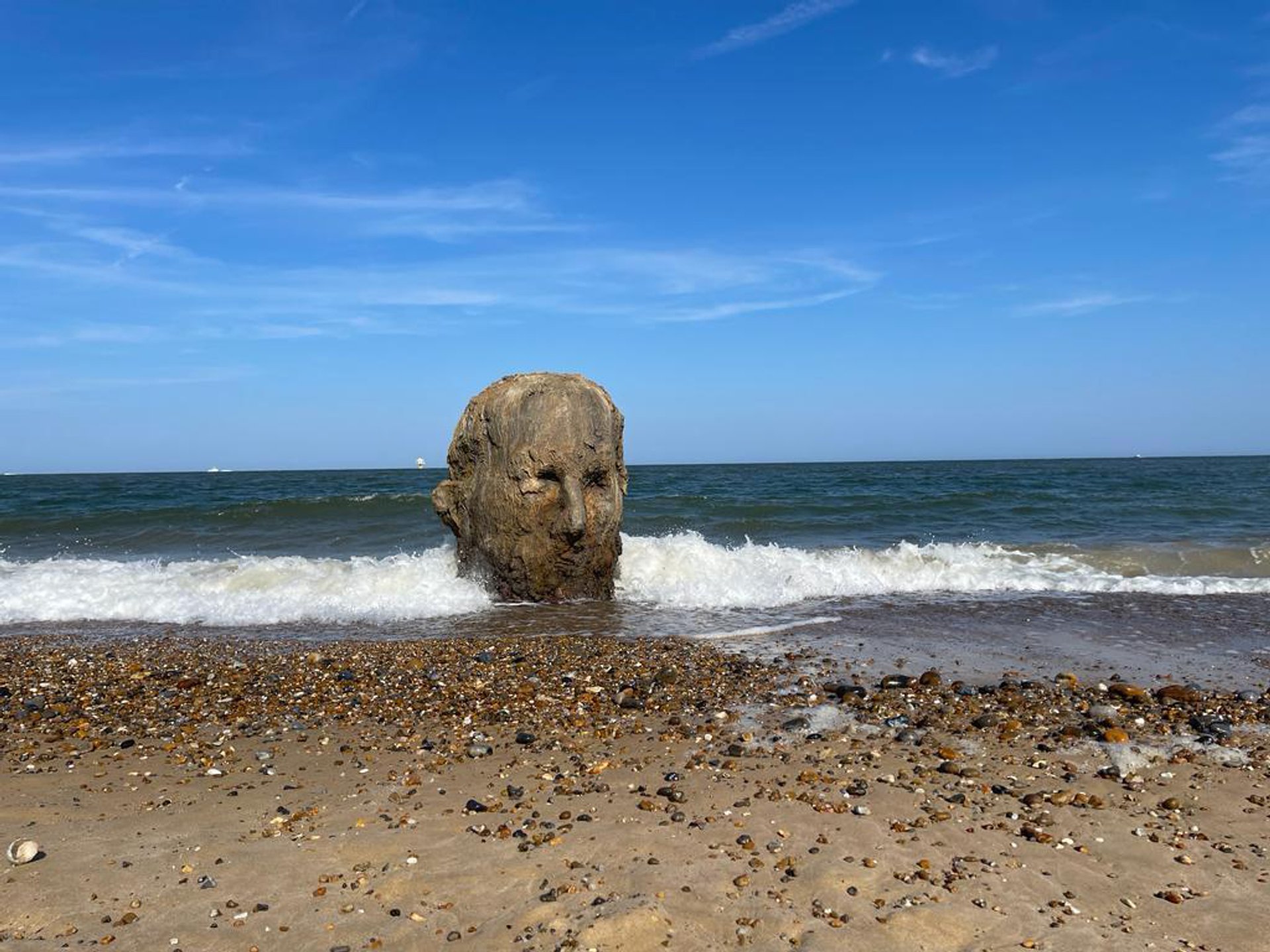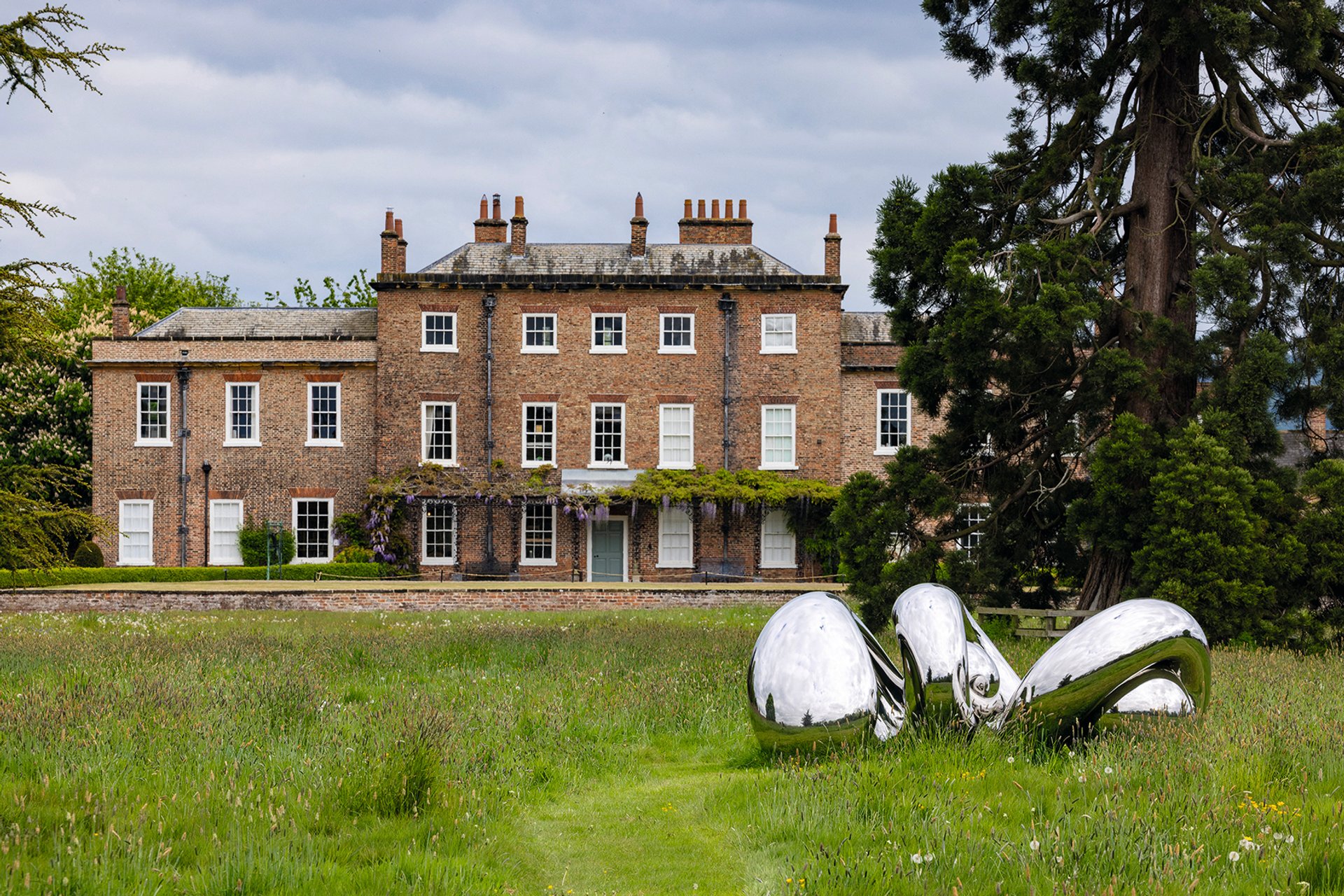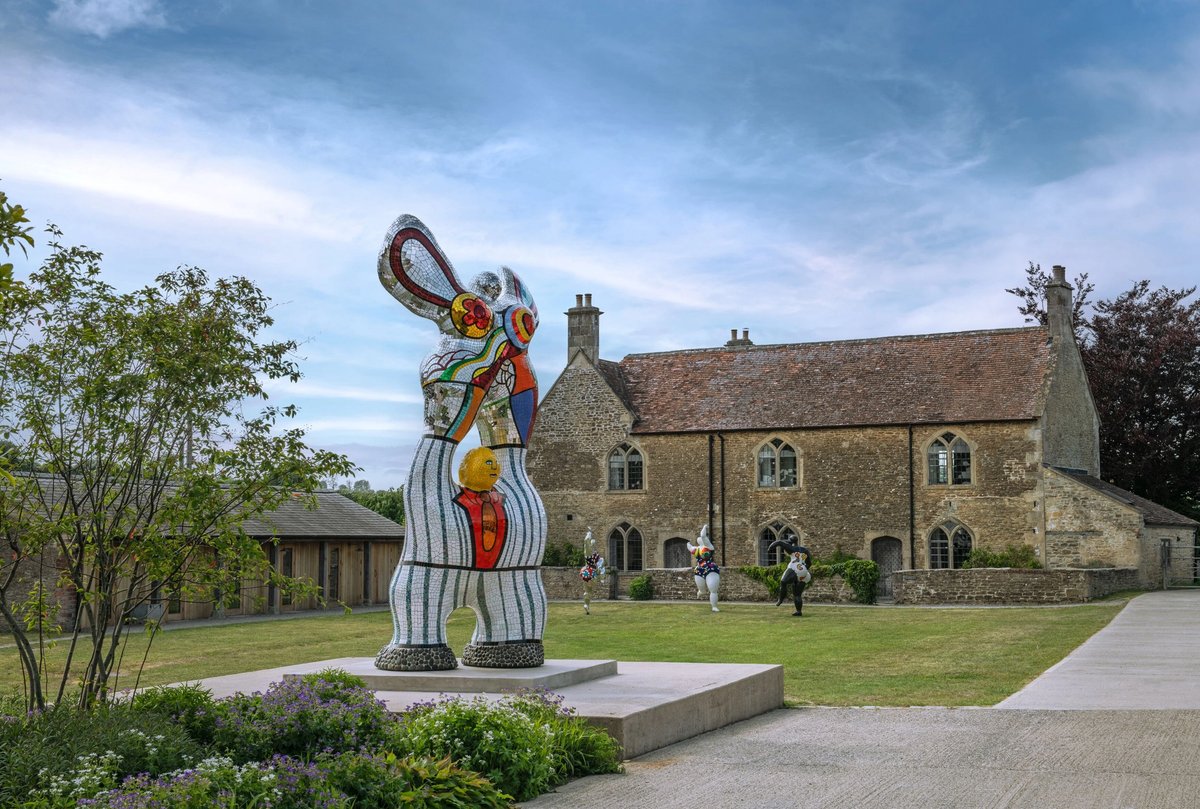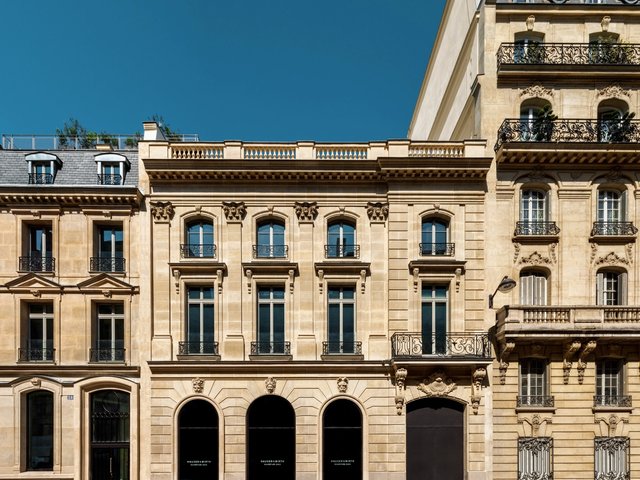Since it opened in 2014, Hauser & Wirth Somerset has brought contemporary art, burrata and around 110,000 visitors a year to the small town of Bruton in southwest England. But Hauser & Wirth is not alone in realising that a commercial gallery can take on a whole new character, audience and purpose in a rural location. In 1994, Madeleine Bessborough moved the New Art Centre, the sculpture gallery she established in London in 1958, to Roche Court in Wiltshire, built for Lord Nelson in 1804. Today, sculptures by the likes of Richard Long, Dorothy Cross, Barbara Hepworth and Antony Gormley are set out around the grounds and purpose-built galleries, juxtaposed against the working farm.
Set on the outskirts of Tisbury between Roche Court and Bruton, Messums West celebrates its tenth anniversary next year. It also occupies a former farm, the focal point being a cathedral-like, 13th-century monastic tithe barn. The Wiltshire gallery attracts 150 to 200 visitors a day and large-scale sculpture shows are the biggest draw, alongside regular talks and symposiums, says its founder Johnny Messum.
Education is a key component. Messum says that many children have received little or no art education since the creative arts were downgraded to a non-core subject in 2010. Addressing this, and the lack of access to art in more deprived areas in the UK, is a founding principle of his next project, Messums East in Lowestoft, due to open in the Suffolk town’s old Post Office next May.

Laurence Edwards’s Large Chthonic Head (2023), a temporary installation on the beach at Lowestoft, in Suffolk,organised by Messums in 2023. This summer’s Sculpture in the Sands exhibition also featured work by Edwards © The artist; courtesy of Messums
“Lowestoft Council came to have a look at what we’re doing here in Wiltshire, because we have quite a focused outreach programme,” Messum says. The council then invited Messum to visit. “We walked down Lowestoft high street and they pointed at almost every single empty building asking, ‘Which do you want?’” The new venture will rethink the role of arts institutions today, Messum says, and will include workshops and room for five artists in residence, plus a bookshop, café and commercial exhibition space run by Messum to generate income to feed the outreach programme. Before the gallery itself opens, Messums East mounted the exhibition Sculpture in the Sands this summer, installing works by Laurence Edwards and Zena Holloway on Lowestoft beach.
Education has long been a focus of the New Art Centre—Roche Court Educational Trust organises regular visits and workshops for local schools and runs the Articulation public speaking prize for young people aged 16 to 19. Hauser & Wirth Somerset also has an active learning programme and has been visited by more than 800 educational institutions since 2014, says its senior director Dea Vanagan. She adds that prioritising free entry and working with the local community is paramount. “Somerset traditionally is an incredibly creative place in terms of cultural industry, and Bruton has a rich history of writers, musicians, photographers and artists that have been drawn to the area,” she says. “We have always focused on building upon this foundation and contributing in a meaningful way.”

Surrounded by nature: Richard Hudson’s Unwind (2018) at Thirsk Hall sculpture garden, the North Yorkshire base of Willoughby Gerrish Courtesy of Willoughby Gerrish
Crucially for attracting London visitors, both Messums West and Hauser & Wirth are within walking distance of train stations, and the same is true of Thirsk Hall in North Yorkshire, where Bill and Daisy Gerrish, an art consultant, set up a sculpture garden and gallery in 2021. The house, set in 20 acres of parkland, has been in Daisy’s family for 300 years and she, Bill and their young children moved there from London in 2020. Bill, after working at the Fine Art Society in London for a decade and being director at Bowman Sculpture from 2015 to 2019, set up his own art dealership under his full name, Willoughby Gerrish, in London in 2020.
“As a sculpture-heavy dealer, it made sense to try to do something where we lived, as well as in London—it’s a perfect boutique site,” he says. “It’s very nice to be able to say to an artist, ‘Here’s a 20-acre site, what do you want to do with it?’” In addition to showing large-scale sculptures by Jeff Lowe, Emily Young, Zak Ové and Laura Ford around the grounds, the couple have converted a 17th-century barn into a gallery space and created a shop, café, glamping site and guest flats in the main house too.
The Yorkshire gallery is “where we can do more ambitious projects”, Bill Gerrish says, pointing to the re-creation of the sculptor Austin Wright’s studio (a permanent feature) and this summer’s loan show of sculptures from London’s Ben Uri Gallery & Museum and the Modern Art and St Ives exhibition (both 9 July-18 September).
Vanagan agrees that the “opportunity to realise open-air presentations surrounded by nature” is a key element in Bruton, pointing to the current Niki de Saint Phalle and Jean Tinguely exhibition Myths & Machines (until 1 February 2026) as a perfect example. “Programming is slower in Somerset than our urban galleries,” she says, adding that people often make repeat visits.
Around 5,000 people a year visit Thirsk Hall, plus those who come to the regular events such as beer and pizza nights, forest bathing, talks and yoga classes. “If you’ve got 200 people visiting and they say, ‘I really love the art, I’ll bring my friend back next time’, there’s your cultural win—it’s a soft power thing,” Gerrish says.
The business case
But forest bathing aside, what is the business case for these galleries? “We’ve actually had a great five years, because we’ve positioned ourselves as one of the go-to galleries for monumental sculpture,” says Gerrish, who often works with interior and garden designers, and is currently helping a US collector build a collection of large-scale sculpture. “This vision of the amazing English idyll with sculptures in it is something buyers want to buy into—like at Messums, with that amazing gallery space, and Hauser too,” Gerrish says.
Sales of large-scale sculpture by internationally known names such as Elisabeth Frink and Laurence Edwards are also the bread and butter of Messums West, although “on a day-to-day basis, the price point is much lower,” Messum says. “You lose some of the urgency for sales here, but you can be a place where things happen first,” he adds.
But most importantly for Messum, the gallery and its café provide a sense of community at a time when many traditional meeting points in rural areas—pubs, churches, village shops—have been shut down. “These are the places where people used to engage with each other—now they don’t exist and no wonder there’s a loneliness epidemic,” he says.
Gerrish agrees with Messum that building a community is crucial: “We run a membership scheme, but actually it’s community ownership … what we thought about when we opened was what was necessary for a town of 15,000 people? What they don’t want is another art gallery on the street, they want something different and the membership is a nice version of that—they get access every day and for a lot of them, part of their daily routine is to walk around the sculpture garden. Getting a local community to ‘buy in’ is essential.”




